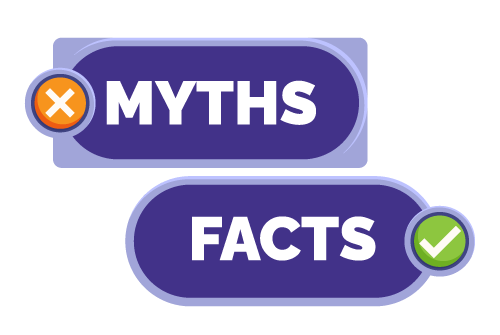 Since October is National Learning and Development Month, let’s celebrate the occasion by breaking down some myths about generational learning.
Since October is National Learning and Development Month, let’s celebrate the occasion by breaking down some myths about generational learning.
We’ve all heard that younger learners prefer digital experiences and that older learners can’t handle new technology. We’ve also heard that younger learners have short attention spans and that older learners can’t learn new things.
But these are, mainly, myths. We can all agree that every learner is unique and will experience challenges differently. However, there are things we share throughout the generations regarding learning. Identifying these generational learning myths will help us debunk them and find common ground.
Myth 1: Younger Learners Prefer Digital, Older Learners Can’t Handle Technology
Contrary to popular belief, we all want to experience a social learning atmosphere. Whether in-person, social, or virtual learning, we all strive for meaningful social interactions that help us build community. Collaborative learning helps solidify knowledge by encouraging learners to articulate ideas and hear others’ perspectives. While younger learners may sometimes excel using digital platforms, that’s not all they want or need. Similarly, not all older learners struggle with digital tools, and they may enjoy opportunities to use new and developing technologies.
Myth 2: Short Attention Spans Are Only a Problem for Younger Learners
Attention spans are an issue for both younger and older learners. In both cases, designing learning experiences that encourage sustained attention is important. For example, drip learning, spaced learning, and blended learning approaches effectively improve learner engagement because they align with how the brain processes, retains, and applies information. In addition to attention span, all age groups can struggle with cognitive overload, reducing the ability to process and retain knowledge. Chunking information, spacing learning over time, and using techniques like retrieval practice benefit learners of all ages.
Myth 3: Older Learners Can’t Learn New Things
Finally, let’s dispel the “too old to learn” myth. Brain science shows us that all of us, no matter our age, have neuroplasticity – the brain’s ability to adapt, change, and grow new connections in response to learning. In her article for the Mayo Clinic on the Power of Neuroplasticity, Sara Youngblood Gregory says, “In short, neuroplasticity means you can retrain your brain, tap into new skills, and maybe even learn a new language, no matter your age.” While the brain may adapt more easily for younger learners, older learners benefit from more prior knowledge.
Conclusion
Learners across generations share common needs when it comes to effective learning. Relevance is key, as people of all ages want meaningful experiences that address their challenges and skill gaps. Social learning fosters a sense of community by encouraging collaboration and diverse perspectives and strategies like spaced learning can combat attention span issues and cognitive overload can help learners of all ages. Finally, the brain’s neuroplasticity allows learners of any age to adapt and grow, making continuous learning an achievable goal for everyone.
So, this October, consider what different generations have in common. We can utilize brain science about how people learn regardless of age to inform our work and create effective learning experiences for everyone.
